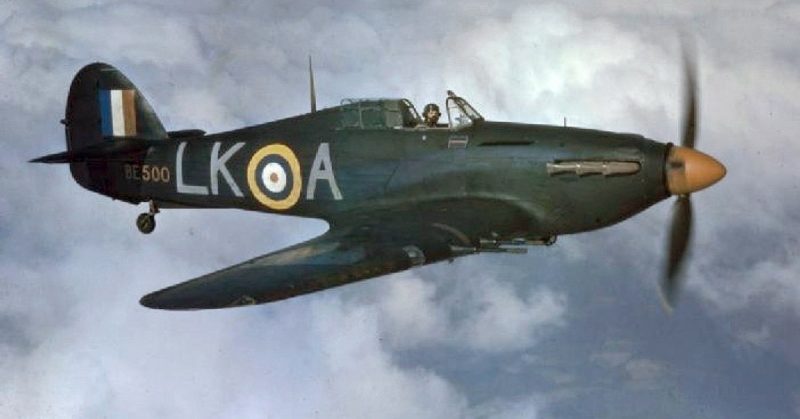The Spitfire is widely recognized as the plane that fought the Luftwaffe during the Battle of Britain. Another plane, however, was just as crucial to the fight. Although older and less glamorous, the Hawker Hurricane played a vital part in the Battle of Britain and many other aerial battles of WWII.
Building on the Fury
In 1931, Hawker Aircraft Ltd. provided a new fighter plane to the British Royal Air Force (RAF). The biplane, called the Fury, quickly became popular with pilots due to its sensitive controls and fast rate of climb. By the mid-1930s, it was the main British fighter.
Planes were changing quickly in the years between the World Wars, and by 1937, the Fury was being superseded by other fighters. Building on the successful design of the Fury, Hawker developed a new plane. First flown in November 1935, it was the Fury Monoplane. The name was replaced in June 1936 when it became the Hurricane.
Like the Fury, the Hurricane had a metal tube-shaped body with a fabric covering. At the time, planes were moving toward stressed-metal construction. The RAF was in a hurry to get an eight-gun monoplane into service quickly, as the prospect of war in Europe looked increasingly likely. The Hurricane went into production using the old technology. It was only later that stressed-metal wings replaced fabric-covered ones.
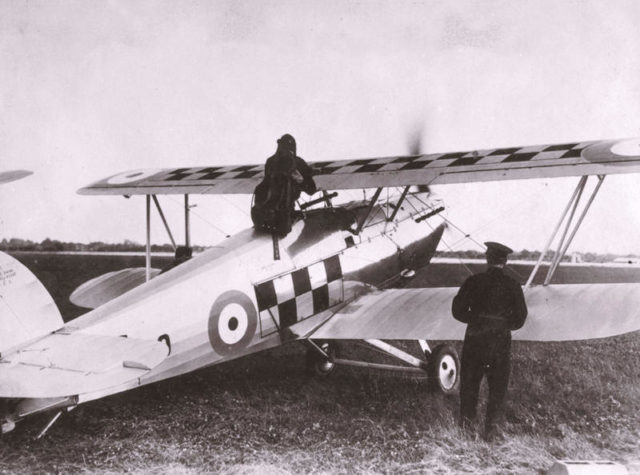
A Popular Plane
Like its predecessor, the Hurricane quickly became popular with RAF pilots. It was a fast, agile fighter that gave them lots of maneuverability and control. Along with excellent visibility from the cockpit, it was a perfect aircraft for fast-moving dog fights.
Its combat worthiness was enhanced by 8 Browning machine-guns. Each one could carry 334 rounds, providing plenty of firepower.
The Hurricane was tough as well as hard-hitting. It could take a lot of punishment in battle while still providing a stable gun platform.
The Hurricane was also fast. It was the first RAF plane to go faster than 300 miles per hour.
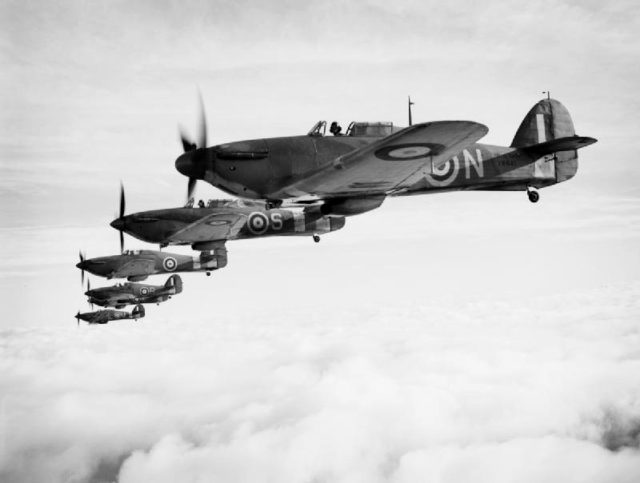
Early Operations
The first Hurricanes entered RAF service in December 1937. The pilots were eager to test the limits of their new machines. The following February, a Hurricane from 111 Squadron made a record-breaking night flight from Edinburgh to RAF Northolt, in which its average speed was 408 miles per hour.
At the beginning of WWII, the Hurricane was the most prevalent fighter plane in the RAF, outnumbering Spitfires in Fighter Command by two to one.
Four squadrons were in operation in France early in the war, and it was the Hurricane that bore the brunt of the aerial fighting in the initial days. On October 30, 1939, a Hurricane from No.1 Squadron was the first British plane to shoot down a German aircraft, when it took out a Dornier Do 17 fighter.
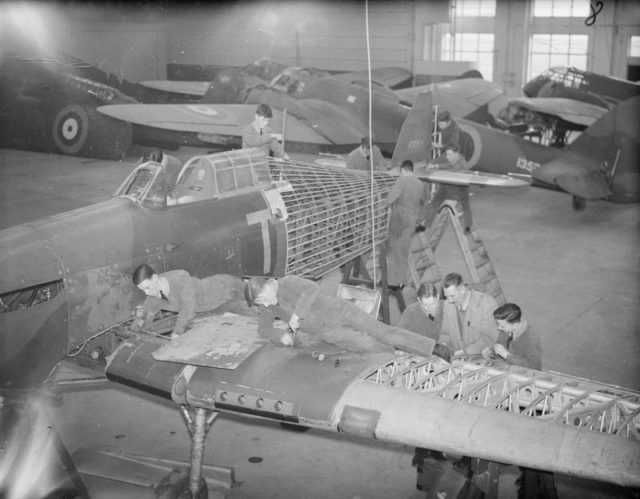
The Battle of Britain
In July 1940, Germany began large-scale air operations against Britain in preparation for a planned invasion. The Battle of Britain began.
For the British, it was the darkest time of the war. The very real threat of invasion and conquest hovered over them, as the Luftwaffe did their best to force Britain into an armistice.
During that conflict, the Hurricane made its greatest mark. While the more advanced Spitfire became the most famous plane of the battle, Hurricanes played a larger part in the fighting. They did the most damage to the Luftwaffe, destroying more aircraft than all Britain’s other air and ground-based defenses combined. It was achieved against incredible odds, as the Luftwaffe had twice as many fighters in the battle as all the Hurricanes and Spitfires combined.
In August 1940, Flight Lieutenant J. B. Nicholson’s Hurricane went on fire during fighting over Britain. Despite his burning plane, he took on a Luftwaffe Messerschmitt Me 110. For his heroic action, he earned the only Victoria Cross awarded to a member of Fighter Command during the war.
In November 1940, Italy launched its only massed bombing attack on Britain. Hurricanes from Nos. 46, 249, and 257 Squadrons took to the air to stop them. They destroyed seven of the ten Fiat BR.20 bombers and four of the Fiat CR.42 fighters escorting them.
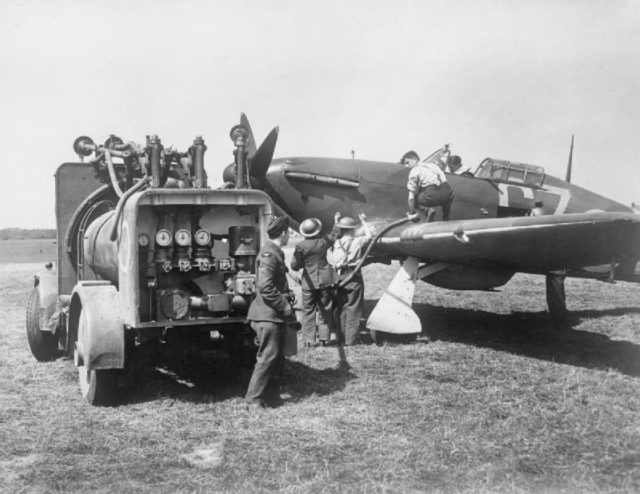
Service Abroad
Hurricanes served in other theaters of WWII.
In August 1940, they defended Malta against Italian bombing raids.
In North Africa, Hurricanes played a prominent role against German and Italian forces. There, they worked as ground-attack aircraft, taking out Axis tanks and infantry.
In Burma, Hurricanes were the main RAF fighter facing the Japanese.
At sea, Hurricanes joined the Fleet Air Arm as carrier-based fighters. They also formed part of the Merchant Ship Fighter Unit, defending merchant shipping from Axis attacks.
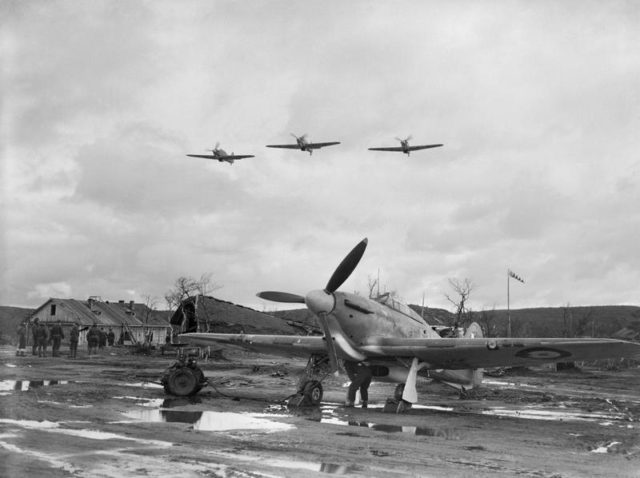
Various Versions
Many different versions of the Hurricane were deployed during the war.
The Mk II Hurricane followed the Mk I into service in September 1940. Improvements included replacing the Merlin III engine with a two-stage supercharged Merlin XX. Some Mk IIs carried eight machine-guns, like the Mk I. Others carried 12. The Mk IIC, which entered service in April 1941, had four 20mm cannons instead of machine-guns.
Other variations included the Sea Hurricane, which had catapult and arrester gear for use on aircraft carriers. A night fighter Hurricane was equipped to hunt and fight enemy aircraft in the dark. A ground-attack version was fitted with a pair of 40mm anti-tank guns enabling it to destroy enemy armor.
14,231 Hurricanes were produced between 1935 and 1947 when the last Mk IVs were withdrawn from service. It was a fighter that helped to save Britain. A few surviving examples still fly today, celebrating its role as a source of light in Britain’s darkest hour.
Source:
Francis Crosby (2010), The Complete Guide to Fighters & Bombers of the World
